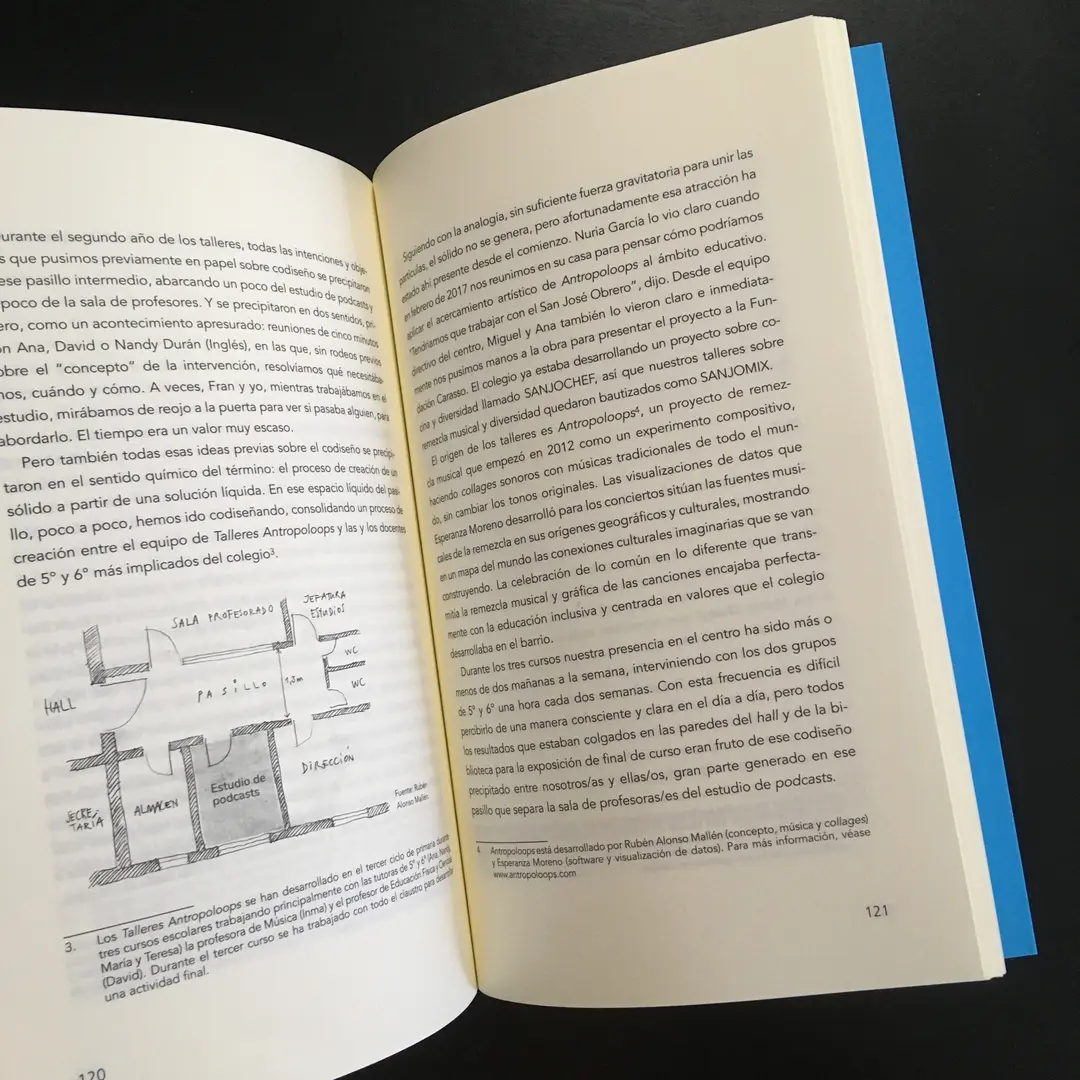
it was a hot end of the school year in Seville, a Tuesday, June 18, 2019 to be more exact. At half past four in the afternoon the small access door to the public school San José Obrero was burning. The door is made of steel, and the navy blue color with which it is painted could not do much to counteract its southern orientation, that without forgetting that we were in Verano s/n street.
although it was not the first time we went to the school in the afternoon, after two years of "residing" there artistically in the mornings with the antropoloops Workshops, and experiencing the intensity and vitality it has, the silence of the empty school was still strange. If it were any other day of the many days in which it functions as a community center in the neighborhood, one would surely hear, for example, the hymn of Andalusia sung by the senior citizens' choir "La Alegría", or music from a meeting of the Christian congregation of Nigeria, but that afternoon there was nothing to be heard when Fran and I arrived
we were sweaty and knackered, the intensity of the school year had to be added to the intensity of the last days of setting up the final exhibition of the workshops in the library. Even that morning we were finishing off the little details in the time we had while each class went downstairs with their tutors to visit it and explore the musical remixes we had made with the 5th and 6th grade students. We had talked with Ana, the head of studies, about opening the exhibition to the public also in the afternoon to make it easier for interested people to attend, thinking especially of the students' families. We were aware of the difficulties due to work schedules and in many cases for socioeconomic reasons; almost half of the students at San José Obrero are of migrant origin and the center is labeled as "difficult to serve". Miguel, the director, told us one day, gathered in the library, that they did a survey of the families to change the name of the school to some illustrious Andalusian, but it seems that the saint was a worker, and so it stayed that way. As in the 70's, "la Macarena" is still today a working class neighborhood, but a global working class neighborhood
in addition to the posters we had put up around the neighborhood in the places where we went out with the students to record musical life stories that year, we had also placed one at the entrance of the school to announce the final exhibition of the workshops. The day we put it up we had a pleasant feeling of belonging, our work was at the level of all those daily messages and communications from the school to the families, calling them when they drop off or pick up their children. At half past four in the afternoon, in the sun, the posters formed an ecosystem of photocopies and prints in unstable equilibrium on the school's brick wall, giving it a soft, more permeable texture. On the top of the poster of the exhibition we could read: DEL SANJOMIX A TODA LA TODA LA GALAXIA (FROM SANJOMIX TO ALL GALAXIA), Fran and I went over with our fingers the sticky paper that held the poster together with the rest of the photocopies stuck to the brick wall and we opened the navy blue door to enter
(initial excerpt from the text)
A pleasure / honor to share the learnings of the last three years at @Sanjomix with @fdnc_es in this great little book about art residencies in school @CatarataLibros @ConsorcioMuseos... written by Rubén but from the collective voice of the work team, we leave you the beginning of the text to open mouth..
text: Rubén Alonso
edited by: Eva Morales (Invisible Pedagogies)
publisher: Buy here on the Catarata editions website
year: 2020




